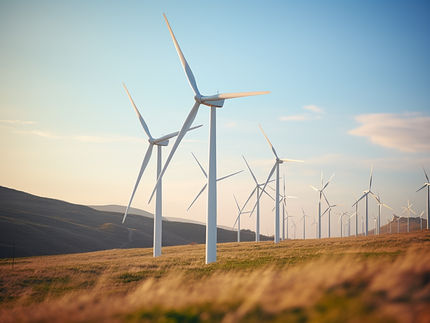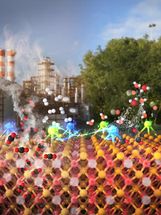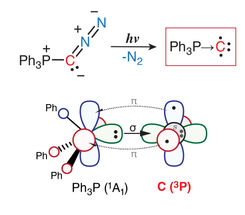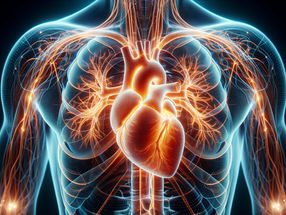Shifting winds in turbine arrays
New model described shows changing air flows can transfer energy to wind turbines from both above and below the blades
Researchers modeling how changes in air flow patterns affect wind turbines' output power have found that the wind can supply energy from an unexpected direction: below.

Experimental "isocontours" data show the mean streamwise velocity along the center line of a scaled wind turbine array.
J.Newman/RPI
According to the researchers, who report their results in the journal Physics of Fluids, many wind turbine array studies overlook the fact that important airflow changes occur inside the array.
"We discovered that a typical measure of the significance of flow changes was rather deficient," says Jensen Newman, co-author of the paper and a graduate student at Rensselaer Polytechnic Institute's Department of Mathematical Sciences. Inspired by a desire to describe the flow experienced by realistic wind turbine arrays in greater detail, the team created a model of how flow affects wind turbines' output power.
The researchers introduced a mathematical way to measure changes in the flow that gives a more accurate representation of the magnitude of these changes than other current measures. "It shows that in addition to energy being made available to the turbines from above, energy is also transferred from below," Newman explains.
The tools and methodologies developed by the team for calculating changes in the flow can now be applied to other studies -- for any type of flow with a repetitive pattern. Since they were also able to show that energy comes from below the rotors, it may be possible to exploit this by developing wind farms that draw more heavily on this previously unidentified source of energy.
Going forward the researchers plan to further expand the scope of their model. "We'll apply this analysis to the case of two-bladed vs. three-bladed turbines to identify the critical differences in flow patterns and how these affect turbine power production," says Newman. "Similar analysis will be performed using much larger turbines to examine how the physics discovered here scale with turbine size so that the extrapolation of the results to full-scale wind farms can be better understood."
Original publication
Other news from the department science

Get the chemical industry in your inbox
By submitting this form you agree that LUMITOS AG will send you the newsletter(s) selected above by email. Your data will not be passed on to third parties. Your data will be stored and processed in accordance with our data protection regulations. LUMITOS may contact you by email for the purpose of advertising or market and opinion surveys. You can revoke your consent at any time without giving reasons to LUMITOS AG, Ernst-Augustin-Str. 2, 12489 Berlin, Germany or by e-mail at revoke@lumitos.com with effect for the future. In addition, each email contains a link to unsubscribe from the corresponding newsletter.





















































